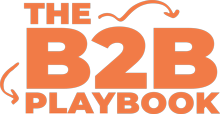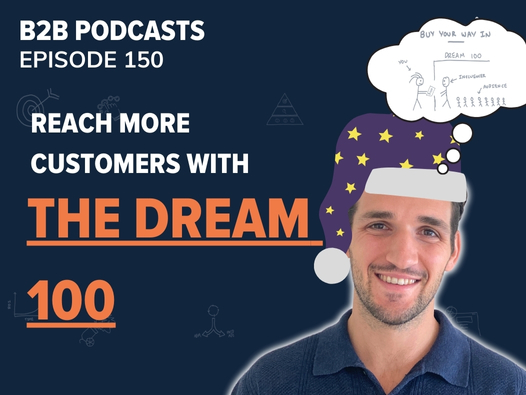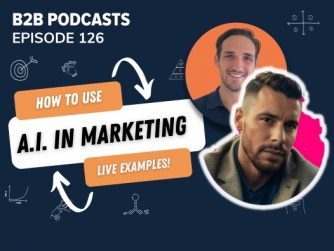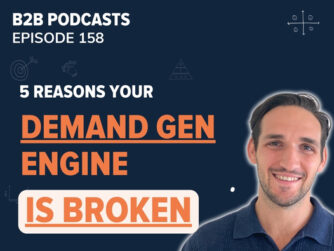A key part of any demand generation strategy is getting your helpful content in front of your target’s eyeballs. But reaching them can often be a challenge. That’s why I fell in love with The Dream 100 technique, and it’s now part of my demand gen process.
It’s not about chasing 100 dream customers – it’s about identifying and tapping into the communities where your ideal clients are already hanging out. This gives you a roadmap of where you need to be to get your content in the right circles, and where you need to build trust.
In this article, I’m going to break down how we’ve used the Dream 100 to supercharge our demand generation at The B2B Playbook, and show you exactly how you can do the same for your business. Trust me, by the time you finish reading, you’ll be itching to create your own Dream 100 list and start driving real results.
As per usual, you can watch, listen or read our article on The Dream 100 below!
Listen To The Episode
Watch The Episode
What is the Dream 100 and Why Does It Matter?
The Dream 100 is not the top 100 customers you’d love to win. It’s actually a list of 100 places that your dream customers hang out online and offline. This could be anything from a niche blog to a popular newsletter, or even influential individuals on LinkedIn. It’s an amazing way to figure out where your dream customers are and also how to prioritize your resources.
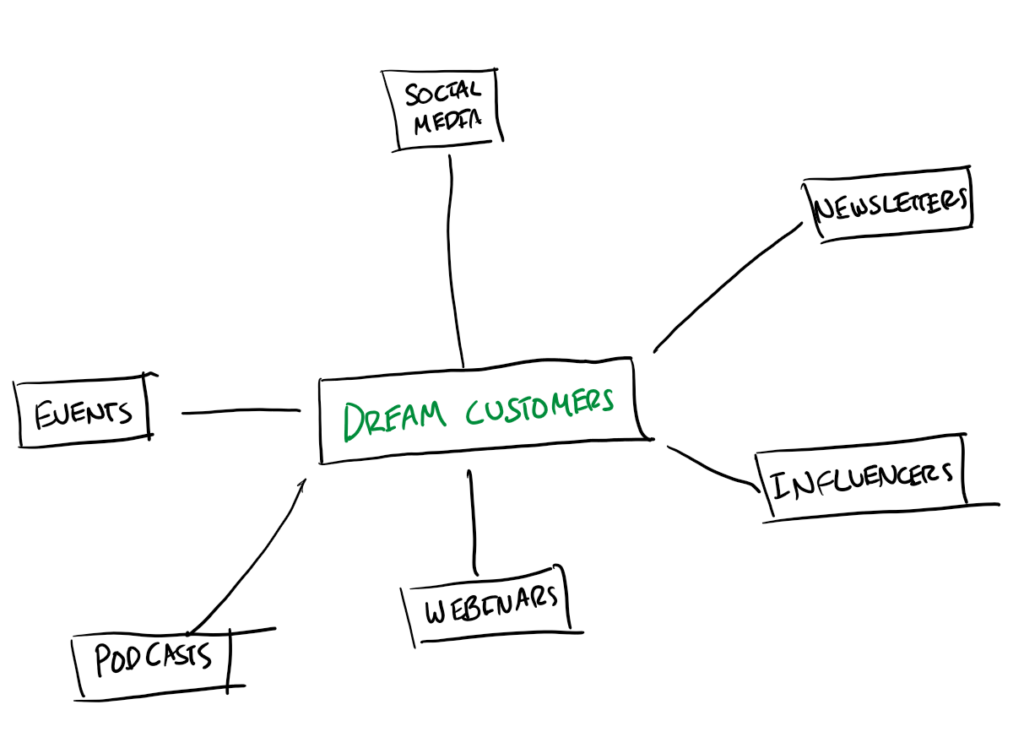
The beauty of the Dream 100 lies in its laser-focused approach. Instead of scattering your efforts across various platforms, it guides you to where your ideal buyers are already congregating. The end game? To transform your ideal buyers’ journey from “I’ve never heard of this company” to “Yes, I do business with that company”.
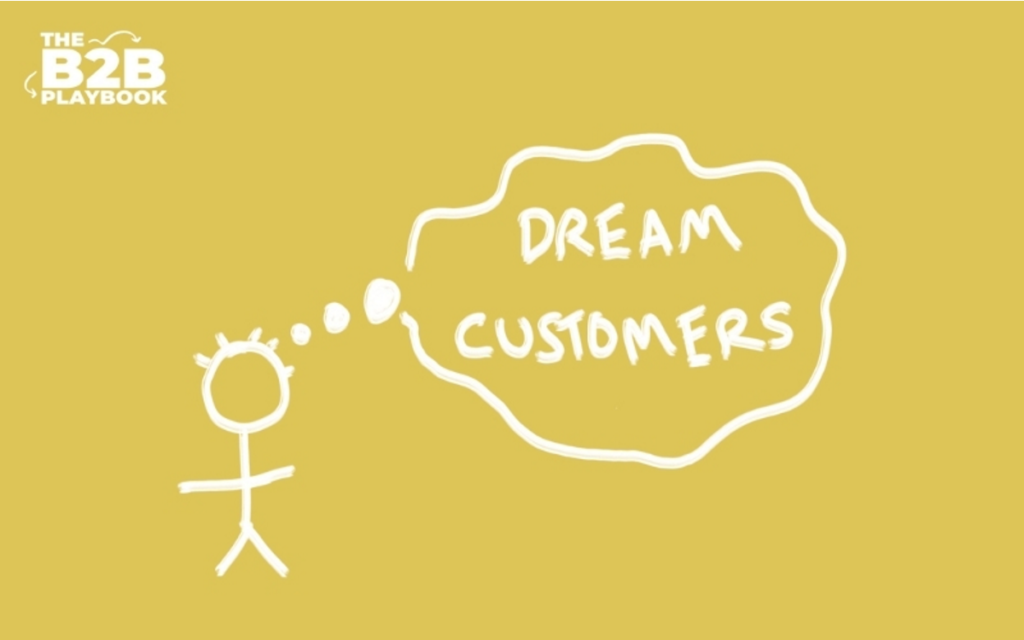
Every organization has limited time, budget and resources. The Dream 100 exercise helps you prioritize where you need to be to maximize your influence and impact on future customers.
The other beauty of the Dream 100 is it allows you to build trust with and sell to multiple customers through communities at once, rather than approaching companies on a 1:1 basis.
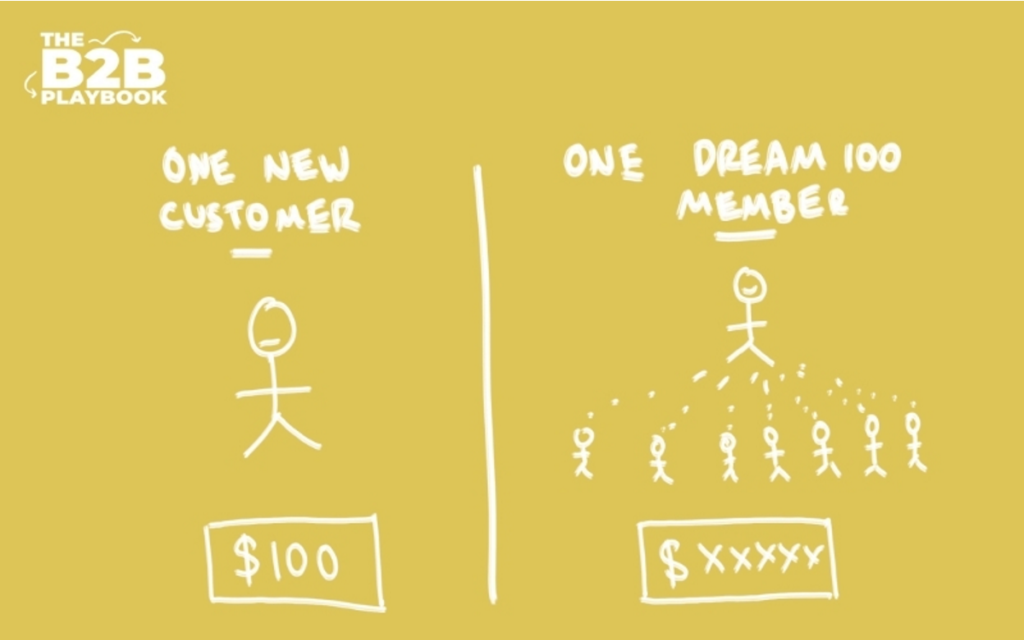
Working your way in front of a relevant community with thousands of members is a much more efficient way to deliver your message. Not to say that it should completely replace 1:1 interactions – but this should be used to supplement and get in front of many potential prospects at the same time.
How To Build Your Dream 100 List
A simple way to record your Dream 100 list is in a spreadsheet. We recommend you use the following columns:
- Place your Dream 100 hang out (e.g. community, event, newsletter, slack group, podcast, complementary businesses, websites, social groups etc.)
- Audience size
- Contact details
- Additional notes/details
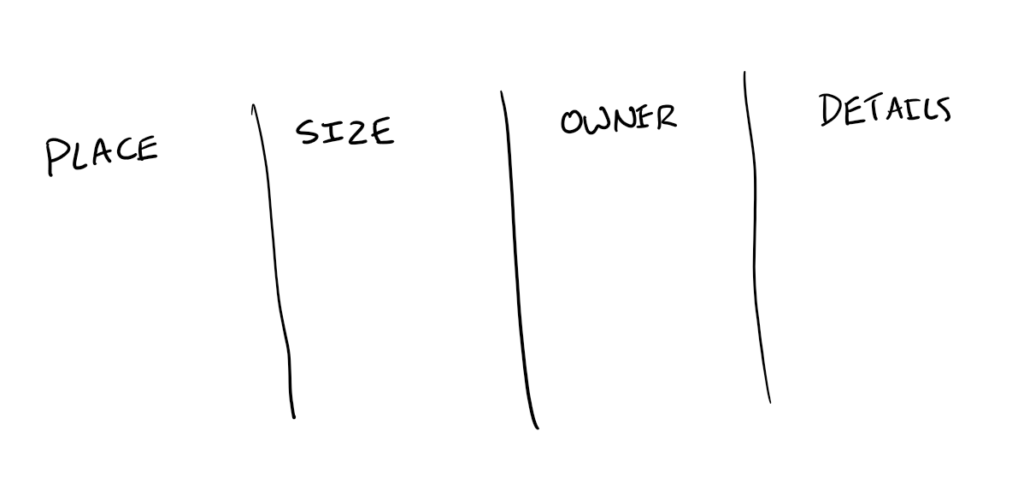
As a one example, here’s how we’d fill that out for The B2B Playbook.
- Place: Metadata’s Demand Gen Community
- Size: 3000+ marketers
- Owner: Katie Ray (Director of Community & Events)
- Details: Community organized for Demand Generation marketers by Metadata.
This is just one place that we know our Dream Customers are hanging out!
How To Find Out Where Your Customers Are Hanging Out?
Core to The Dream 100 is figuring out where your customers are gathering both online and offline. There’s a few ways you can do this:
- Speak to 8-10 of your best customers and conduct customer interviews. Questions you can ask include:
- What events do you attend? What communities are you part of? Where do you go to find out about new products like ours? Do you subscribe to any newsletters? Listen to any podcasts? Follow any thought leaders?
- What events do you attend? What communities are you part of? Where do you go to find out about new products like ours? Do you subscribe to any newsletters? Listen to any podcasts? Follow any thought leaders?
- Use a tool like SparkToro to help with audience research
In our experience, there’s no substitute for directly asking your customers. It’s amazing how much easier and more targeted your resources are when you just ASK!
How to Prioritize Your Dream 100 List?
Once you’ve mapped out the top places your Dream Customers hang out online and offline, it’s time to prioritize where you should spend your limited time, budget and resources.
We recommend prioritizing by balancing potential impact with a realistic assessment of whether or not you’ll get in front of the audience in that Dream 100 place. For example, when we started The B2B Playbook, we would have loved to be a guest on a podcast where lots of our Dream Customers are listening. Something like Neil Patel’s podcast. Or maybe feature our Demand Gen Framework in Hubspot’s newsletter.
We’d get in front of 100s of thousands of B2B marketers if they had us on as a guest. How good would that be!? But it just wasn’t realistic. We had no reputation, and no relationship with Neil and his team – or Hubspot. Instead, we realised our best bet was to enter communities that our Dream Customers were in (like LinkedIn groups, slack channels), and to share our knowledge to build trust.
How To Use The Dream 100 List
Once you’ve created your Dream 100 list, how can you actually use it? There are two primary approaches to leveraging your Dream 100 list:
- Working Your Way In – i.e. organic relationship-building, and
- Buying Your Way In – paid sponsorships
Working Your Way In
Working your way in is about building a relationship with that Dream 100 community or in that channel. You especially want to show the organiser or owner of that community that you’re consistently delivering value and earning their trust. This will allow you to continue to expose their audience to your way of thinking.
A great example of working your way in is where we built a relationship with popular marketing leaders on LinkedIn. We put together a collaboration with them to build ‘The Perfect B2B Marketing Campaign’ (see here) that features their expertise. Once complete, each marketing leader promoted it to their own communities and audiences, exposing our brand and products to their audience!
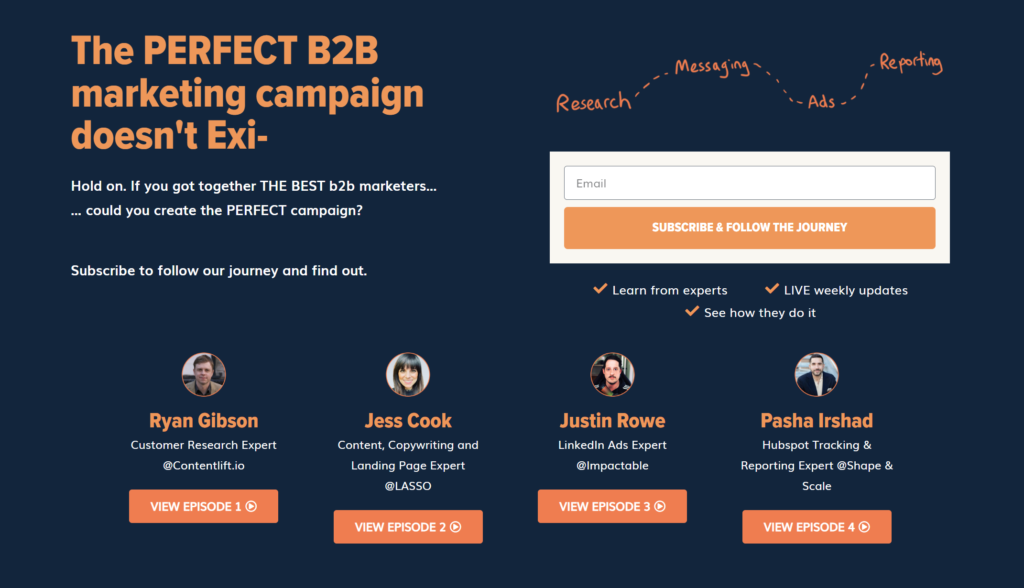
We’ve also worked hard to build relationships with brands and businesses that we know our Dream Customers follow. Our most recent one is a content collaboration with Factors AI, where we built a ‘Sales and Marketing Alignment Workbook‘ with them. They then promoted this to their audience – making it another win-win scenario.
‘Working your way in’ is best when you find win-win scenarios. A win for the community and its owner (through you delivering helpful content), and a win for your brand by exposing it to new potential customers.
Buying Your Way In
Buying your way in is essentially using paid sponsorships to buy the eyeballs of a Dream 100 community. You don’t need to limit advertising spend to the major platforms like Meta, LinkedIn and Google.
You can reach out to communities from your Dream 100 list, and try and get your material in front of them by offering the owner of the community sponsorship money. The reality is that the attention of most communities can be bought. I see this all the time in my B2B Marketing communities, with popular newsletters being sponsored by brands.
This is essentially what is happening now with the rise of Thought Leadership Ads on LinkedIn. Influential thought leaders on LinkedIn are being approached by brands who are asking them to post positively about their product in exchange for money. The brands will then use Thought Leadership Ads to boost the positive posts to their Ideal Customers, leveraging the reputation and trust the thought leader has with their audience.
Generally you will get faster results from ‘buying your way in’ as you more immediately get your brand in front of your prospects’ eyeballs, but it doesn’t scale as well as ‘working your way in’ organically.
My advice is to start by ‘working your way in’ organically so you understand these communities deeply and what resonates prior to ‘buying your way in’. As always, consider your resources, goals, and timelines to achieve these.
Next Steps For You
It’s time for you to get cracking and to put your Dream 100 strategy together! Here’s your action steps:
- Create your initial Dream 100 list with 10 high-value locations (no need to do ‘100’ – that’s too many to start with!)
- Prioritize based on existing connections and potential impact
- Develop a mix of organic relationship-building and paid engagement strategies
- Enable subject matter experts to contribute valuable content
- Continuously refine and update your Dream 100 list based on results
Remember, success lies in consistent effort and strategic engagement with wherever it is your Dream Customers are hanging out!
The Dream 100 concept and how to execute it is part of our 12 Week Demand Generation Course, The B2B Incubator. Check out why Demand Gen Marketers are calling it a “masters degree in demand gen” and how it’s helped marketing teams drive 80% of pipeline.
